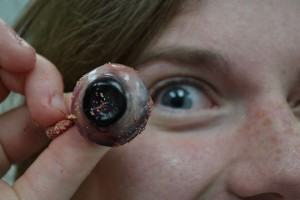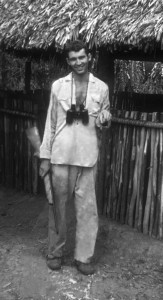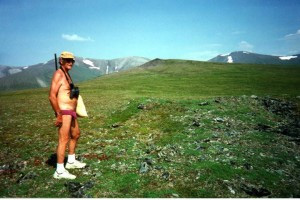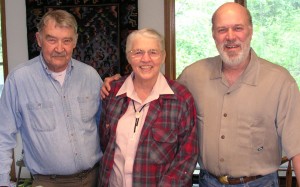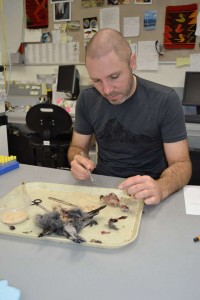We’ve been playing with data and seeking gaps in the collection. After the jump check out the .gif of how the collection has accumulated Alaska specimens since 1950. It’s a neat look at geography and time.
Continue reading
Category Archives: Bird collection
My, What Big Eyes You Have
The Growing Power of the Ranks of the Dead
Every animal dies. Starvation, predation, disease, old age—whatever the means, eventually the end comes. We humans have a heightened morality about death, and this is good. But at times this morality is not well directed. Uproars over individual animal deaths often overlook larger and more important issues. Recently it was an eruption over a kingfisher killed in the Solomon Islands. Last year it was about a spider. Both animals were euthanized by scientists to preserve the bodies as scientific specimens to be added to research collections (which I facetiously call the ranks of the dead in the title). And in both cases there were international outcries because a scientist had killed an animal.
More Space for Birds!
Thanks to a grant from the National Science Foundation, the Bird Collection has undergone a critical facilities upgrade with the installation of new cabinets and a compactor system. This gives us space we desperately needed. We are currently moving, rearranging, and re-housing the whole collection into and around this new space. We continue to occupy our old, 1980s cabinets and compactor space; this new addition was put into to space we obtained during the museum expansion. It is so cool. We had a hard time believing just how many cabinets could be squeezed into that space. Have a look at some photos…
Swanning
When you walk the basement halls of a museum, you are likely to encounter weird stuff.
A Legend is Gone: RWD (1926-2015)
Sadly, our good friend and colleague Robert W. Dickerman (RWD) passed away recently. Bob was active with our group for many years during the summers, and the Bird collection has over 1,500 specimens that he was associated with either as collector or preparator. Bob was one of the most dedicated collections professionals and specimen-based researchers the world has seen. Andy Johnson wrote an excellent summary in 2012 of some of Bob’s career. Among Bob’s professional accomplishments included over 230 publications and at least 59 subspecies of birds described. Highly active well into his 80s, Bob may be gone, but he and his accomplishments will be long remembered by us and by many other ornithologists.
A Visitor from New Zealand
We were pleased to host Jason Froggatt last month for some intensive work in the bird lab. Jason is Collections Manager in Natural Sciences at the Auckland War Memorial Museum in Auckland, New Zealand. He took the opportunity to come up here to learn some of the tricks of the trade that have served us so well in developing our modern and relatively heavily used bird collection. Jason spent every day, hands-on, with our processes, learning how we work with skins, skeletons, tissues, and stomach contents to preserve a diversity of samples and how we handle the associated data. He also had many keen observations from his own experiences that he gladly shared with us. We had a great time and look forward to future interactions with Jason and the Auckland War Memorial Museum!
Trends in positions in research collections
In the research museum business, especially in the biological sciences, we’ve long been seeing declines in the number of positions being filled. This is something to be worried about because a) we have a lot to learn about biodiversity still, b) we’re losing said biodiversity at an unprecedented rate, and c) collections need to continue growing because they document so many important aspects of the environments we humans depend on. It’s not like other disciplines in research museums are getting fat at the expense of those disciplines losing positions; it seems to be an industry-wide phenomenon. Vicki Funk of the Smithsonian Institution recently posted an article outlining the dire situation in botany at a global scale.
On the other hand, the rising U.S. economy seems to have opened up a number of new vacancies, leading Michael Ivie of Montana State University to write an email to TAXACOM entitled “What A Great Time to be a Young Systematist”, using his observations of openings in entomology. I agree with Mike from an ornithological perspective: there are a relatively high number of positions opening up this year. Mike’s message has generated a long discussion, however, probably because we recognize that the numbers, while relatively high, are still very small in relation to the magnitude of the issues. In short, a long-declining trend is showing a brief halt and upward bump — and we all hope that collectively at least we see the decline stop and that perhaps we even regain some of those historic losses. There certainly is plenty of work to do, both in traditional biodiversity pursuits and in the new ways that collections are being used to study changes in diseases, contaminants, populations, and environmental and climatic changes.
Halloween 2014
Costumed volunteers came out in force to put on a great show for hundreds of visitors! There is nothing more exciting than preparing bird specimens…
Super Pato shows advantages of whole-organism sampling
Increasing the scientific bang for every research dollar spent is important, especially in museums, where funding levels are perennially low. When we do get into the field and get our hands on a bird, it costs about the same to bring it home with us as it would to return with just a few drops of blood or a couple of feathers. While there is little difference in the initial cost, there is a huge difference in the scientific potential of the effort’s product: many more scientists can do a lot more things with a whole bird preserved as a specimen than with only a tiny sample likely to be quickly depleted. And the vast majority of bird populations can easily withstand the relatively small amounts of scientific collecting that are done these days.

